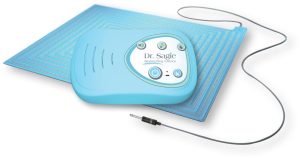Understanding Bedwetting Alarm Treatment
 A very common misconception about treatment with a bedwetting alarm is that the purpose of the alarm is to teach the child to wake up at night to go to the bathroom.
A very common misconception about treatment with a bedwetting alarm is that the purpose of the alarm is to teach the child to wake up at night to go to the bathroom.
However, this is not the case, as the purpose of treatment with an alarm is to condition the reflex system, which is subconscious; therefore, the child waking to the alarm is not a compulsory condition for success. Self-wakening by the child to the alarm is not a compulsory condition for treatment success.
In most of the bedwetting cases that we treat, the child is a very deep sleeper. Even so, the child does respond positively to the comprehensive bedwetting treatment despite of the deep sleep.
The child learns subconsciously to connect between involuntary micturition to the unpleasant alarm response and the waking up and walking to the toilet. When the child does not wake to the alarm, the parents are instructed to do some essential activities that are vital for the learning process (reflex conditioning).
Bedwetting alarm treatment must be short – no longer than five to six months. Otherwise, the child gets used to the alarm, and the deterrent effect disappears. Continuation of the treatment with the alarm means “more of the same.” It causes the child to be frustrated and disappointed and undermines the child’s motivation and confidence in being able to succeed.
Furthermore, we must remember that in most cases, bedwetting treatment using only an alarm system will not be successful, as it needs to be accompanied by a close tracking of the child’s progress, by performing various exercises, and by positive parents’ involvement and reinforcements.
>> Visit our FAQ section for more information about bedwetting treatment
>> To learn more about our plans and pricing click here
Search
Recent Posts
- Summer Sleepovers and Bedwetting: A Parent’s Guide to Confidence and Comfort
- Hot Weather and Bedwetting in Children: What You Should Know
- Springtime and Bedwetting in Children: What’s the Connection?
- Understanding Restraint Mechanisms and Bedwetting in Children
- Giggling and Bedwetting: Why Laughter Sometimes Leads to Leaks
Categories
- ADHD
- adult bedwetting
- All about Bedwetting
- bed wetting
- bed wetting alarms
- bed wetting treatment
- bedwetting
- bedwetting blog
- bedwetting causes
- Bedwetting Dictionary
- bedwetting medication
- bedwetting solution
- bedwetting solutions
- bedwetting therapee
- bedwetting therapy
- diurnal enuresis
- dribbling
- How to stop bed wetting
- nappies
- News
- primary enuresis
- progress chart
- secondary enuresis
- sleep
- sleepovers
- The Solution – Therapee
Tags
Archives
- June 2025
- May 2025
- March 2025
- November 2024
- October 2024
- September 2024
- August 2024
- May 2024
- April 2024
- March 2024
- February 2024
- January 2024
- December 2023
- September 2023
- August 2023
- July 2023
- June 2023
- May 2023
- April 2023
- March 2023
- February 2023
- January 2023
- December 2022
- November 2022
- October 2022
- September 2022
- August 2022
- July 2022
- June 2022
- May 2022
- April 2022
- March 2022
- February 2022
- January 2022
- December 2021
- November 2021
- October 2021
- September 2021
- August 2021
- July 2021
- February 2015
- January 2015
- December 2014
- November 2014
- October 2014
- September 2014
- August 2014
- July 2014
- June 2014
- May 2014
- April 2014
- March 2014







